
On April 25, 1993, the March on Washington for Lesbian, Gay, and Bi Equal Rights and Liberation took place in Washington, D.C. and drew an estimated 1 million people.
Organizers originally expected to attract a crowd of 100,000, but the D.C. Police Department later put the number at somewhere between 800,000 and 1 million, making it one of the largest protests in American history.

At the time, LGBTQ+ people faced widespread discrimination. The community was also still reeling from the HIV/AIDS crisis. And hate crimes against queer people were on the rise.
Planning the event was a herculean effort. It took almost two years and involved a 12-member executive committee, as well as a steering committee over over 200 people.
Together, organizers came up with seven primary demands:
- We demand passage of a lesbian, gay, bisexual, and transgender civil rights bill and an end to discrimination by state and federal governments including the military; repeal of all sodomy laws and other laws that criminalize private sexual expression between consenting adults.
- We demand massive increase in funding for AIDS education, research, and patient care; universal access to health care including alternative therapies; and an end to sexism in medical research and health care.
- We demand legislation to prevent discrimination against lesbians, gays, bisexuals and transgender people in the areas of family diversity, custody, adoption and foster care and that the definition of family includes the full diversity of all family structures.
- We demand full and equal inclusion of lesbians, gays, bisexuals and transgender people in the educational system, and inclusion of lesbian, gay, bisexual and transgender studies in multicultural curricula.
- We demand the right to reproductive freedom and choice, to control our own bodies, and an end to sexist discrimination.
- We demand an end to racial and ethnic discrimination in all forms.
- We demand an end to discrimination and violent oppression based on actual or perceived sexual orientation, identification, race, religion, identity, sex and gender expression, disability, age, class, AIDS/HIV infection.

Years earlier, television networks ignored the National March on Washington for Lesbian and Gay Rights in 1979. And most of them misinterpreted the 1987 march as an HIV/AIDS protest.
But by the early 1990s, gay people had become impossible to ignore or misinterpret. C-SPAN ran more than six hours of live coverage, which you can see here. And Good Morning America ran an eight-minute segment on the 1993 march.
Watch.
Related*


Check out this incredible 16mm footage from Gay Pride Day in 1978
This filmmaker’s candid look at Gay Pride Day 1978 in Washington D.C. is amazing.


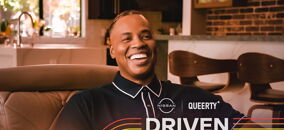

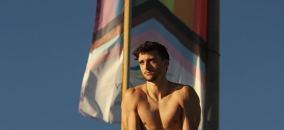


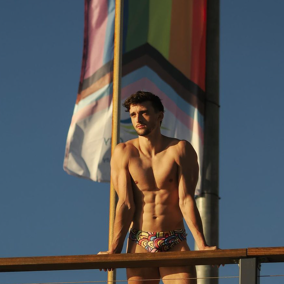
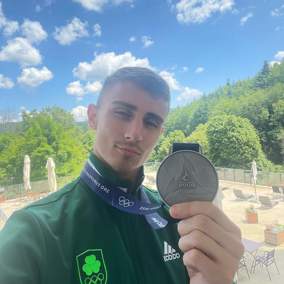







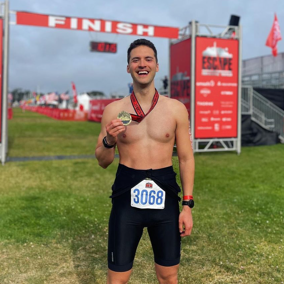

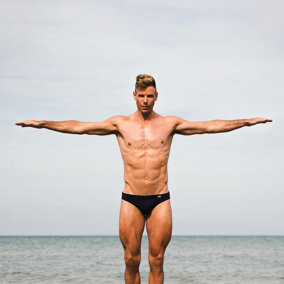


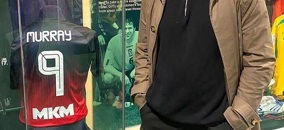






















correctio
not a lot of fat people in these photos. has society grown more accepting? or less healthy…
ShiningSex
no, there’s just more ignorant fools like you alive
DBMC
So that’s what you decided to take from this. I’m kind of shocked at your callousness.
correctio
not callous, just an observation about these pictures are also evidence of how obesity rates have risen immensely since even 30 years ago. people eat slop and sit around too much, and food companies promote an unhealthy narrative of body acceptance
DBMC
No. Callous and shallow.
correctio
@DBMC but like, I’m not wrong
dbmcvey
@correctio
You are so, so wrong. Hijacking something like this for your shallow little peeve. Super wrong.
Kangol2
Extremely hateful. You do realize we were 12+ years into the AIDS epidemic, right? How could you even post such anti-fat, judgmental garbage like this? What is WRONG with you? Get help!
correctio
good grief, some of you are so quick to be outraged that you miss a completely reasonable point: the average American is getting fatter, less healthy. corporations that not only sell but aggressively market bad, unhealthy food have promoted a dangerous narrative, using body acceptance to paper over the health risks.
obesity related conditions have killed far more LGBTQ+ people (and far more straight people) than AIDS
dbmcvey
I love how you keep doubling down. You tried to highjack the post for your silly peeve and you think you’re okay.
correctio
@dbmcvey I love how you have no sensible response to me and instead have to rely on insults
ShiningSex
Sadly the younger generation doesn’t seem concerned with what’s going on and it’s obvious with the lack of protests going on. We are going backwards instead of forward and are allowing it to happen.
I was out there protesting then and would do it now, but no one seems that interested. It’s become so sad that LGBT people are more concerned with tik tok, followers, thirst traps, partying and allowing rights to become a thing of the past.
SDR94103
completely agree.
SFMike
You hit it right on the head. The current generation is too busy locked looking at screens to actually get out and fight. Very Brave New World where the masses are pacified while the fascists do their worst.
correctio
what in the fresh hell are you talking about?? I work with “the younger generation” and they care deeply about these issues. don’t be such a parody of an old bitter person
correctio
also, “locked looking at screens” — just like you on this website!!!
still_onthemark
@correctio: Well, if you work with the younger generation, why don’t you tell them to quit stuffing their faces? You JUST told us you think they’re too fat! Make up your mind!
correctio
@still_onthemark I do? there’s a ton of stuff in schools (such as where I work) about eating healthy
DBMC
corretio is having a hard time maintaining his narrative.
correctio
here are problems that young people face (as well as old people) and are actively concerned about:
– the crackdown on queerness and queer lifestyles
– rising rates of obesity
– gun violence, especially school shootings
– social media (a lot of them HATE it, especially bc it’s one of the few ways left for them to socialize; they feel trapped into using it, scared by how it is shaping their brains)
that’s my narrative! not sure where you are seeing contradiction
dbmcvey
@correctio
And, according to you they’re fat and unhealthy.
thom1031
Agree, this was after high school my first year in college.
witwoud
i respectfully disagree. to say, “the younger generation doesn’t seem concerned with what’s going on and it’s obvious with the lack of protests going on,” is utterly dismissive of the intersectional realities these kids are facing. i’ve participated in demonstrations all of my life: from the second national march on washington in october 1987. it was at the last few protests — david hogg’s march for our lives, and a huge demonstration in chicago demanding immigrant rights, and immigration reform — where i saw hundreds of lgbtq+ youths, marching with their straight counterparts. not to mention, in the past few election cycles gen z, and millennials (along with the stalwart of african-american women) that secured key democratic victories at the polls. the kids ARE protesting, and they are very CONCERNED, just as we were, and continue to be. but kids today have concerns we never had to face: global climate change, lives lost to mass shootings and other gun violence, trying to get an education DURING A PANDEMIC, and a world of increasingly untenable income equality. i’m 60 years old, and i’m an actor in chicago. i work with these kids. with each show i spend three months with them in rehearsals, and on stage, and i couldn’t be more proud of their open queerness, and activism.
correctio
@witwoud thank you!!! all very accurate
DBMC
Thank you so much for this! I wasn’t expecting to see photos of people I knew and loved. This brought so many amazing people and experiences back.
abfab
A bunch of us hung out at the Old Ebbit Grille until the parade began. The Mall in the heat with a million people sweating all over you or a very elegant bar with small plates all day. Take your pick,
Big windows for people watching. It was one of the best days of my life. Laughing and shouting yes, but crying too. It was as you know, super emotional. The party lasted all week long. It wasn’t just for the day. It was magical and a great decade to live in DC. Cybil Shepard lived in my hood…I totally forgot she was there. And Judith Light. OMG.
Everyone was present. There were no cell phones so lots of real-time cruising guys from ALL OVER THE WORLD! Lasting bonds and memories. The bars never closed!
Thanks, Queerty.
Man About Town
I was there for this. I wouldn’t have guessed it was 30 years ago to the day. Thanks for posting!
canadalaw
I marched in this all those many years ago as a college student from Canada.
abfab
I Love BC, esp Vancouver. Best Gay Pride Parades and then it’s off to PumpJacks on Davie. Such a beautiful city.
Kangol2
I was a gaybie but I was there. One thing it underlined for me is that we can never take our rights for granted and sometimes we have to be confrontational and militant, and that if we don’t fight for ourselves no one else will.
abfab
There were so many actual babies, waddlers, toddlers and K-12s. It was a Grand Parade!
abfab
Oh god, the Sisters! Were they not the best? I hope they still are.
Pietro D
The Toronto Gay Pride at the end of June is the Best Gay Pride Parade in the world…….. Bar None!
abfab
I bet it is. So many Parades so few frequent flyer miles! Still, must keep it on the list.
David Myers
I was amazed at what was missed in this flashback of LGBTQ history in the US. They show Joe McCarthy, Anita Bryant, the assassination of openly Gay San Francisco City Councilman, Harvey Milk (and the pro-gay Mayor of San Francisco at the time, George Moscone), and later in the coverage they flashback to the previous 1987 Gay/Lesbian march on Washington . . . . but not a word about the very First National Gay/Lesbian March on Washington that took place largely in reaction to the Milk/Moscone assassination, on October 14, 1979. This march was organized by Harvey Milk campaign organizer, Cleve Jones (who also went on to create the concept and the movement based upon the AIDS Quilt). Harvey Milk had called for a Gay Lesbian National March On Washington during his brief period as a San Francisco openly gay City Counselor. Cleve Jones decided to honor that call, after Milk and Moscone’s assassinations. I and my partner Bill Houghton attended that first Gay/Lesbian National March on Washington and covered it for The Coming Out Radio Show on Co-OP Radio in Vancouver. We must take care to not let import parts of our Gay/Lesbian history be ignored, forgotten, or purposefully destroyed. Accurate History is important!
David Myers
To be clear . . . I was referring to the video ignoring, or forgetting the 1979 first Gay/Lesbian National March on Washington. I see it is briefly mentioned in the text of the article, (but not in the video).
I have photos of the crowd from the top of the Washington Monument looking towards the Lincoln Memorial, over the Marches’ stage and crowd (est. at 125,000) by the organizers, but there is no way to post them here. The National Parks Police estimated our crowd at 25,000 (outrageously under-estimated . . . on purpose).
I interviewed workers in the Washington Memorial who had been at the Pope’s March the week before and our March and both (independent of each other) stated that they thought the crowds look exactly the same size (National Parks Police’s estimate of the Pope crowd was 275,000. Clearly the Parks Police had an anti-gay/lesbian agenda in their respective crowd estimates.
Years later the Million Man March on Washington (responsible black fathers marching against racism and for parental responsibility) had their crowd size estimate by the National Parks Police grossly underestimated and proceeded to sue the National Parks Police resulting in the duty of estimating demonstration crowd sizes in Washington D.C. being taken away from them permanently . . . and being assigned to DC police (I believe), but no longer the DC Parks Police.
lykeitiz
Proud to say I was there. I’ve never experienced anything like it, either before or after.
Out of the 2 friends I went with, sadly one is not here, but luckily the other one I’m still in touch with.
Life changing, for sure.
talondrago
I was just posting a comment to another article about the NON-Christian Right and their Bull Sh*t in Texas. It made me think about the march on Washington and I thought it is time for another March. Then I saw and read this. Let’s call for a new march. We have to fight these FAKE CHRISTIANS before they destroy our country.